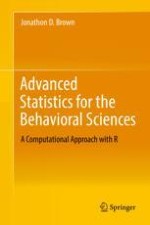
2018 | OriginalPaper | Buchkapitel
1. Linear Equations
verfasst von : Jonathon D. Brown
Erschienen in: Advanced Statistics for the Behavioral Sciences
Aktivieren Sie unsere intelligente Suche, um passende Fachinhalte oder Patente zu finden.
Wählen Sie Textabschnitte aus um mit Künstlicher Intelligenz passenden Patente zu finden. powered by
Markieren Sie Textabschnitte, um KI-gestützt weitere passende Inhalte zu finden. powered by